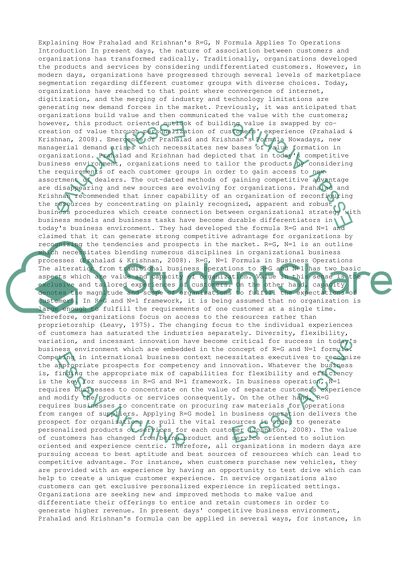Explaining how Prahalad and Krishman's RG, N1 formula applies to Essay. Retrieved from https://studentshare.org/business/1443665-explaining-how-prahalad-and-krishmanyies-rg
Explaining How Prahalad and Krishman'S RG, N1 Formula Applies to Essay. https://studentshare.org/business/1443665-explaining-how-prahalad-and-krishmanyies-rg.


